Vineyard-Hopping Around Switzerland: My Wine Tasting Experience
When I was suggested to go vineyard hopping in Switzerland, my first reaction was, “They make wine in Switzerland, really?”
I had no idea. Come to think of it though, it should come as no surprise. After all, they make wine in neighbouring France, Germany, and Austria.
I did not need any persuading when my friend suggested a holiday there. Switzerland is probably the European country everyone wants to visit. It’s best known for a landscape dominated by snow-capped mountains, montane villages, and crystal-clear lakes. It is also culturally diverse and with many tempting indulgences such as chocolate and cheese made into tantalising dishes like fondue.
In my research, I came across a reference to the Lavaux just above the town of Montreux that was one of the places we wanted to visit. The near-vertical slopes of the Lavaux are protected as a UNESCO World Heritage Site so I needed no other recommendation for it to be included on my seven-day itinerary.
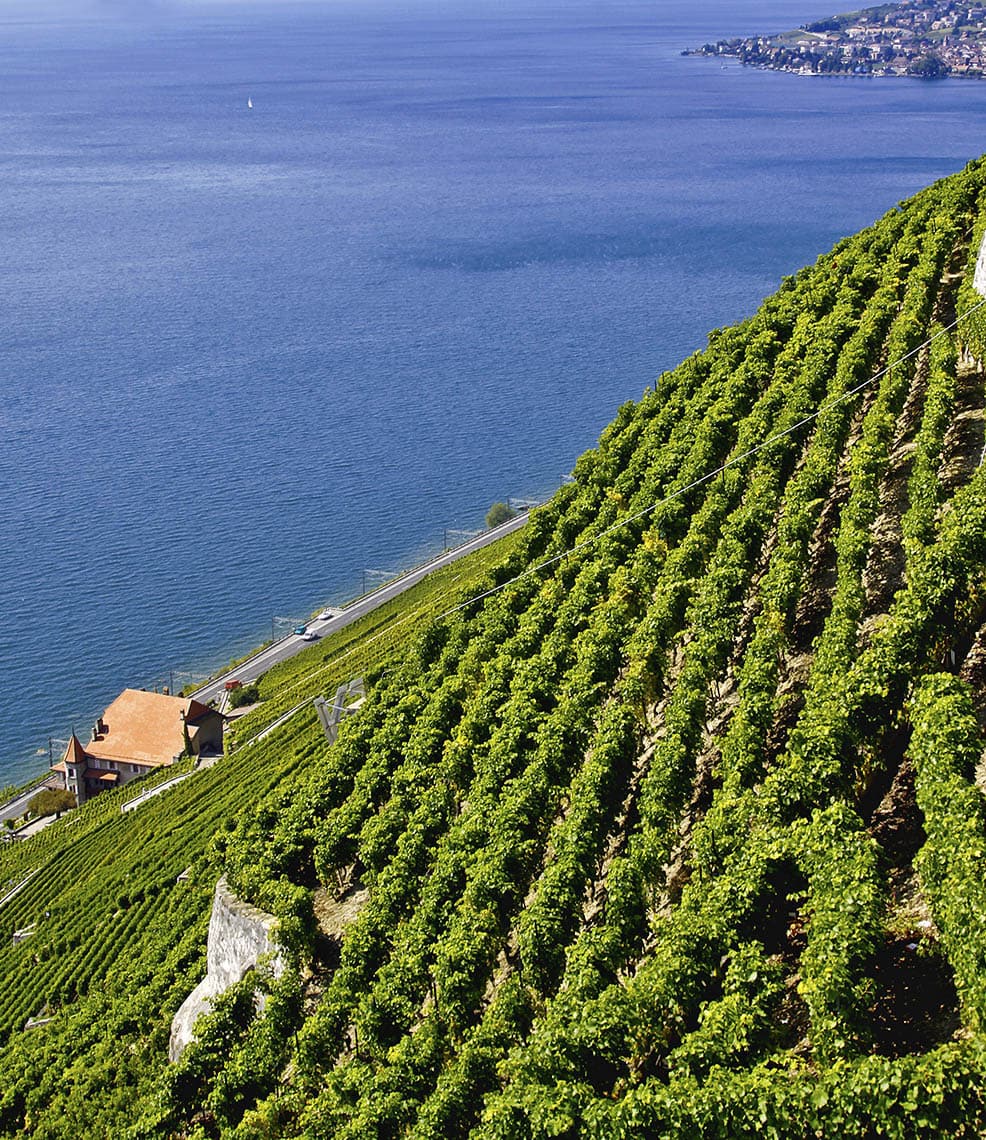
The more research I did, the more I discovered that there were grapevines in many parts of the country. I started wondering why I knew nothing of the wine in Switzerland (200 grape varieties grown in 20 regions!). A little more reading revealed that the bulk of the wine is consumed in Switzerland with just 2% exported and most of that goes to Germany. Swiss wine production is indeed a little secret that the Swiss keep to themselves.
No wonder we see very little of it in Asia but that made me want to discover more and that meant me visiting the regions of wine in Switzerland. I had no problem with that as the vineyards were in places I wanted to visit anyway. So my itinerary was wine-focused. But I realised that the same itinerary could be done by someone with just a general interest in wines and a bigger interest in discovering Switzerland.
My journey involved flying into Zurich on SWISS and then using my Swiss Travel System pass to visit Schaffhausen, Ticino, the Valais, the Lavaux, and then Neuchâtel before ending back in Zurich for my return flight.
Beyond the Falls

With an early morning arrival, I did not want to travel too far, so Schaffhausen to the north on the German border was perfect as I could admire the Rhine River crashing down the famous falls here. On the train to Schaffhausen, I read that wines are made from grape varieties such as Chasselas, Petite Arvine, Savagnin, Pinot Noir, Merlot, Sauvignon Blanc and Pinot Gris.
My mission in northern Switzerland was to head to the small village of Hallau to sample some soft red wines called Blauburgunder. In other parts of the world, the wine is known as Pinot Noir and is one of the noble red grape varieties.
There was an opportunity to wander around the beautiful village of Hallau and sample wines in a few outlets there before heading out to Weinkellerei Rahm where I especially enjoyed a Pinot Noir labelled, “Magistral”.
Wine in Switzerland is expensive compared to many imported wines from neighbouring France, Germany, Italy, and Spain. However, compared to Asia with its high taxes on wines, Swiss wines are not that expensive. Many good wines priced less than CHF20 (the price of a reasonable bottle of wine in Asia).
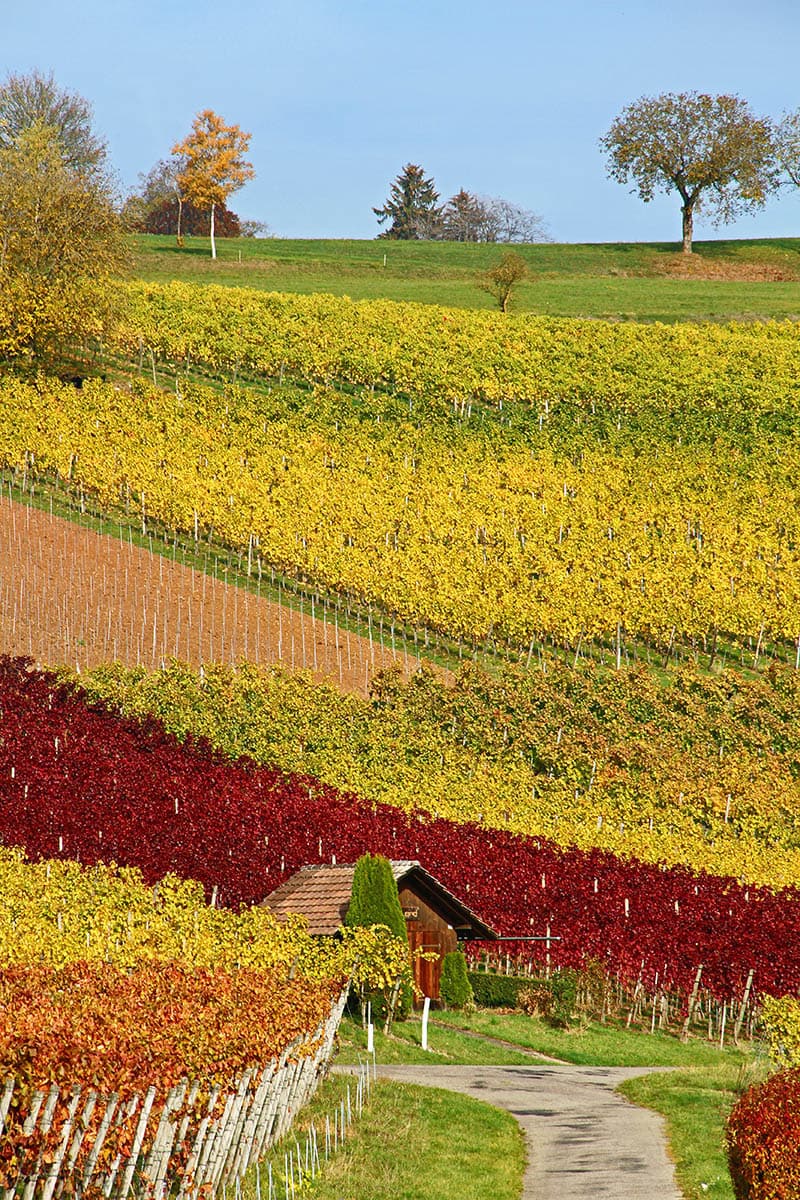
The colours of vineyards look markedly different from sombre greys in winter to a vibrant kaleidoscope in autumn. My visit to Hallau coincided with autumn and I was lucky to photograph the variety of reds, oranges and green of the vines.
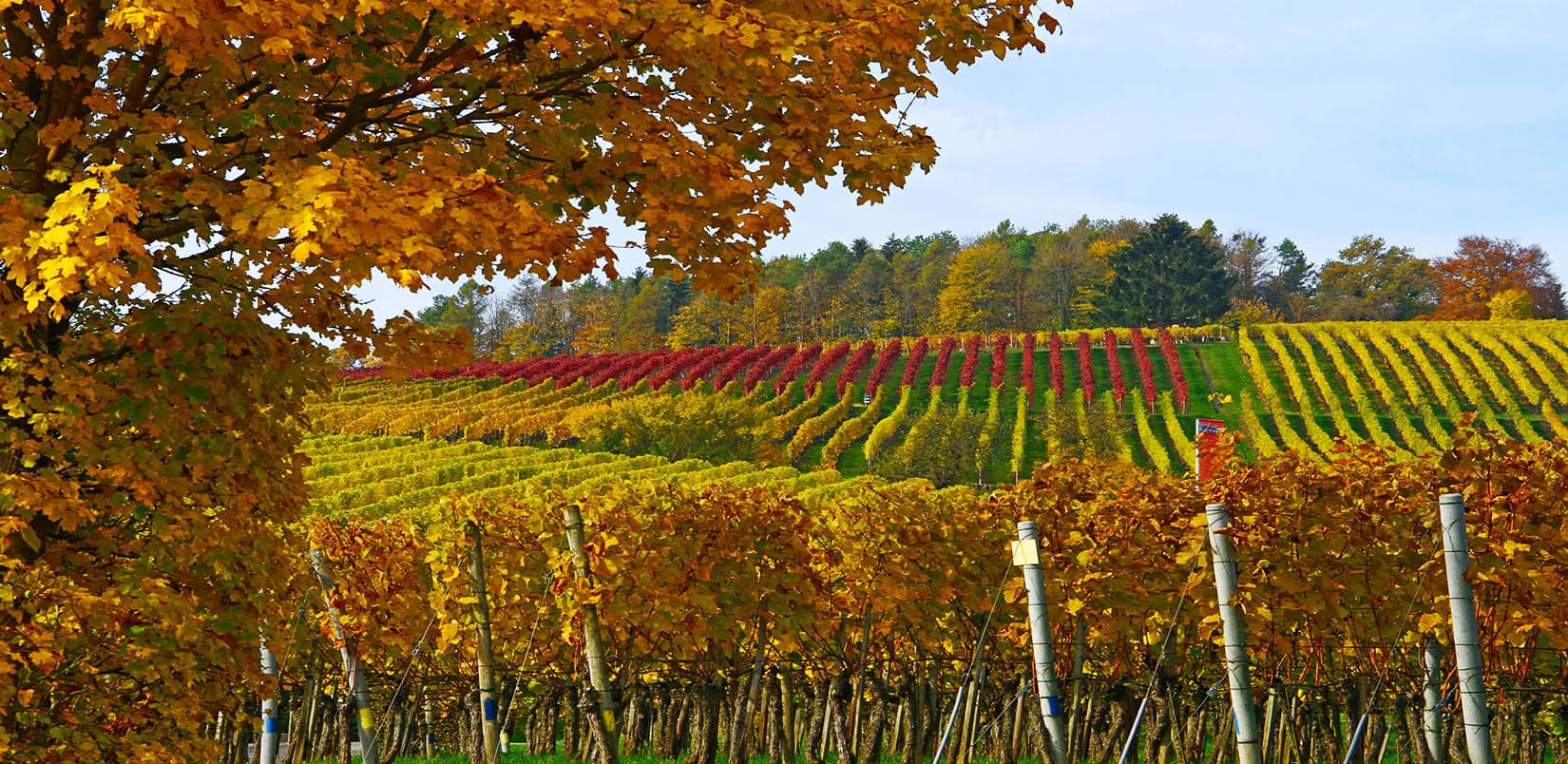
Other red grape varieties that thrive in other parts of Switzerland include Cabernet Sauvignon, Merlot, Gamay and Syrah (Shiraz). Dôle is a blend of Gamay and Pinot Noir and similar to a French Beaujolais.
Dolce Vita in Ticino

Back on the train, I headed due south to Ticino, the Swiss canton closest to Italy. I had read that once you passed the Swiss Alps, the scenery would be markedly different. Ticino’s weather is warmer, palm trees are evident, and the signs appear in Italian. Ticino is yet another pleasant surprise that combines Swiss efficiency with the relaxed Italian ways of life.
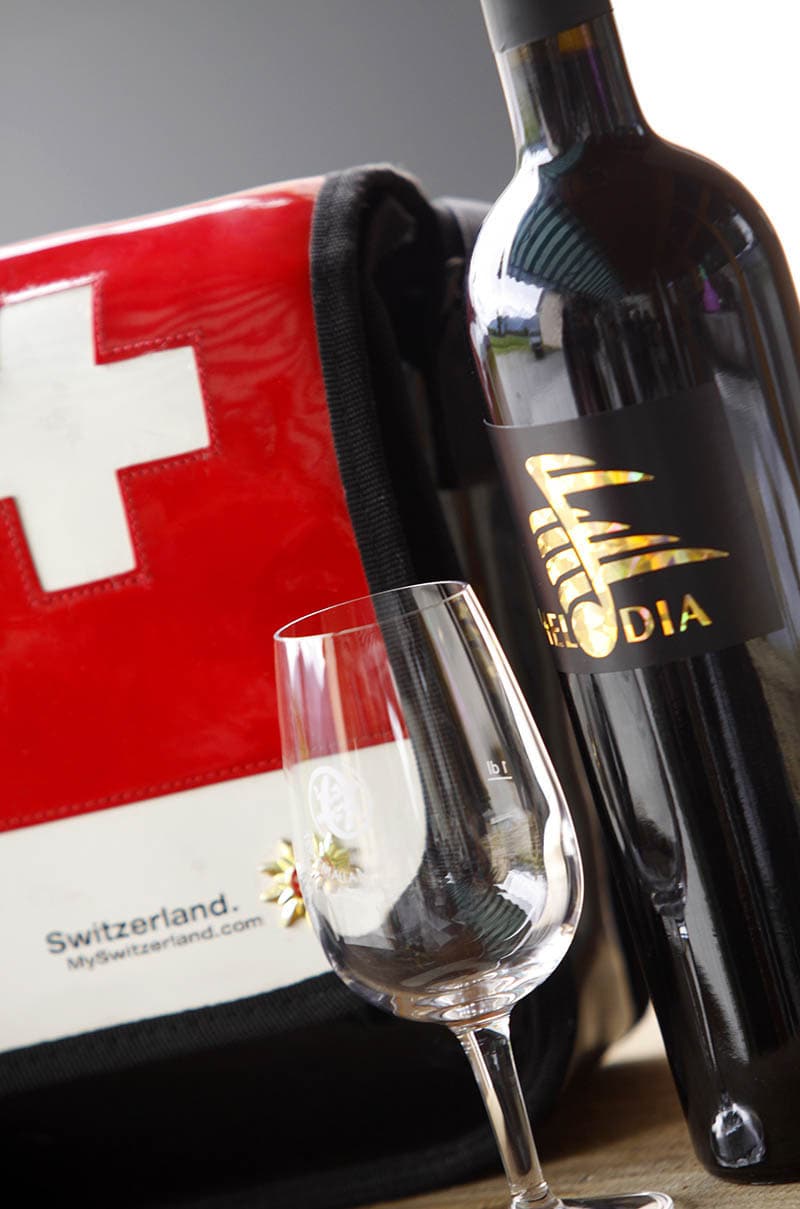
I passed through Bellinzona to have a quick look at the UNESCO World Heritage castle here and noted that there are even grapevines growing within the castle grounds. Merlot is the principal grape variety in the canton and it is interestingly made into both a white and red wine.
While grotti is a village tavern peculiar to this part of Switzerland, there are numerous places to eat along Piazza Giuseppe Motta. I stayed at the wonderful Hotel Tamaro on the tree-lined plaza fronting Lake Maggiore looking towards Italy.
Ticino is the northernmost part of the world where rice is grown commercially and I enjoyed risotto for dinner at Osteria Nostrana on the foreshore. I also ate in Ristorante Seven and indulged in a fine bottle of red Bondola wine from the local estate of Terreni Alla Maggia SA.
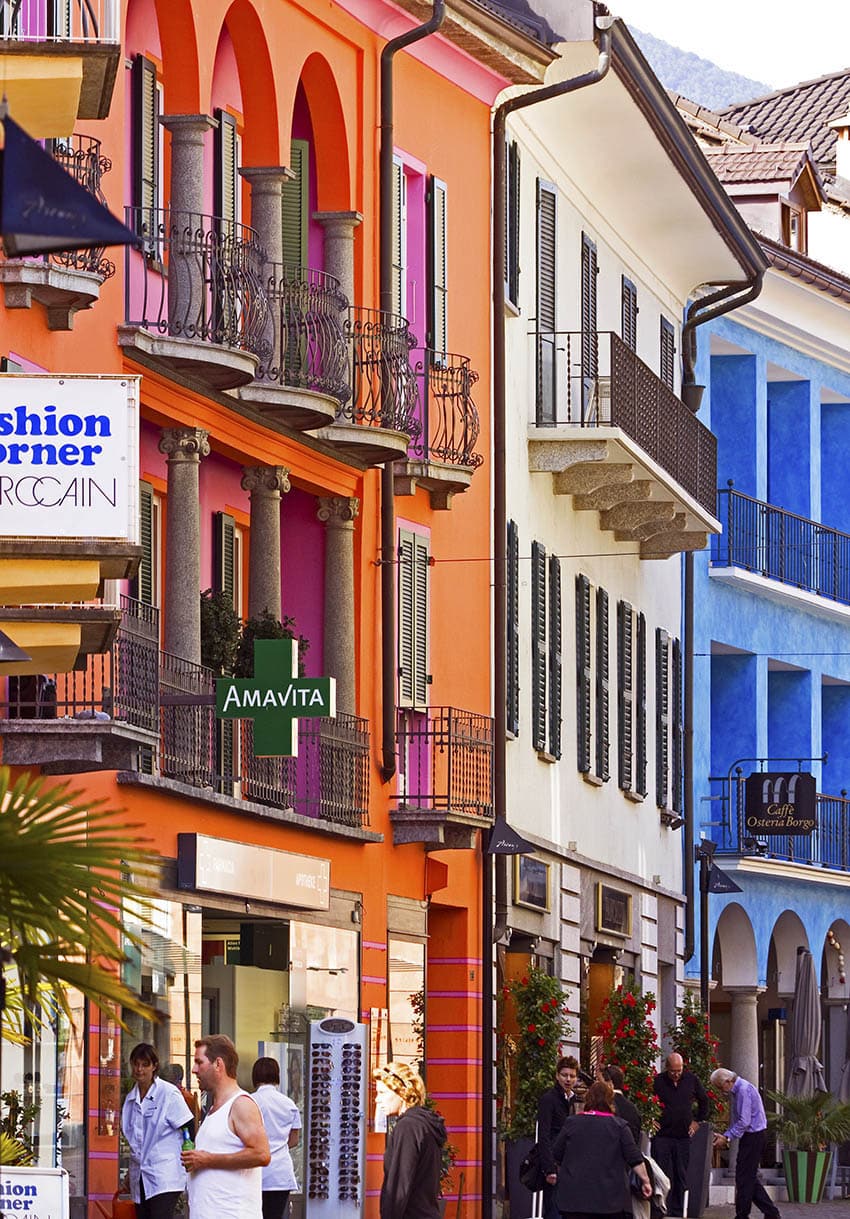
To the Valais

The French know how to make wines so I assumed the French part of Switzerland should uphold these traditions. I travelled by train to the Valais dissected by the Rhône Valley and I was not disappointed. From Ticino, I headed to Andermatt to join the Glacier Express, one of Switzerland’s finest trains (Swiss wines are served on the train).
The town of Visp was my base for exploring the Valais. While some well-known grape varieties are grown in the Valais, local ones attract much of the attention. Varieties such as Amigne, Dôle Blanc, Heida, Chasselas (Fendant) and Sylvaner grow well here. Chasselas is the best-known white and is a fresh, fruity wine with a higher than normal alcoholic content.
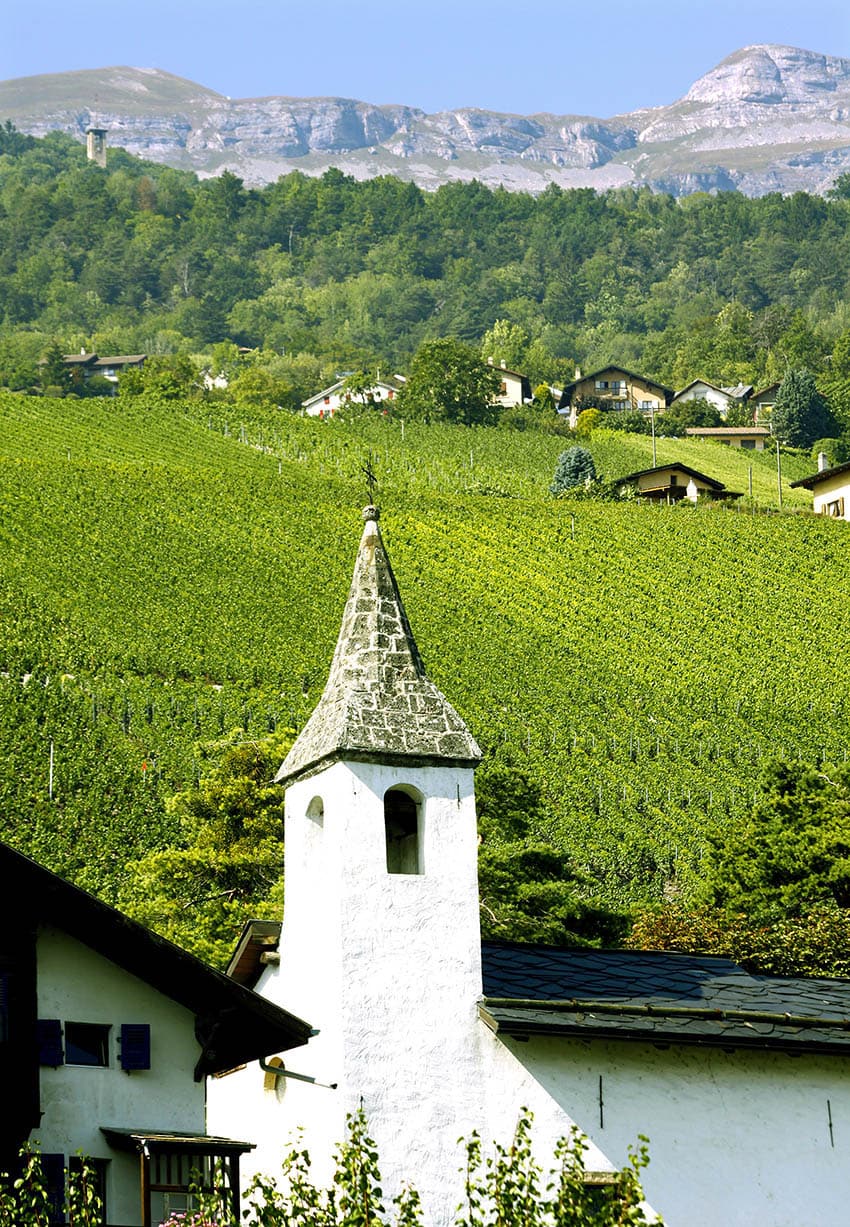
Amigne is another white wine produced in the Valais from just 38 hectares of vines – it grows nowhere else in the world). It is made into a sweet dessert wine and the number of bees (one to three) on the label is an indication of the luscious sweetness.
I knew of the Swiss folktale, Heidi, but was not aware of the wine Heida and travelled by bus to Visperterminen. At 1,150 metres altitude, Visperterminen supports Europe’s highest vineyards and the crisp white wine called Heida was well worth the journey. Strolling around the small village dominated by wooden houses was also rewarding, as were the views across the Alps.
Halfway back down the mountain to Visp, I stopped at the modern winery of St. Jodern Kellerei to sample its red, white, and Rosé wines.
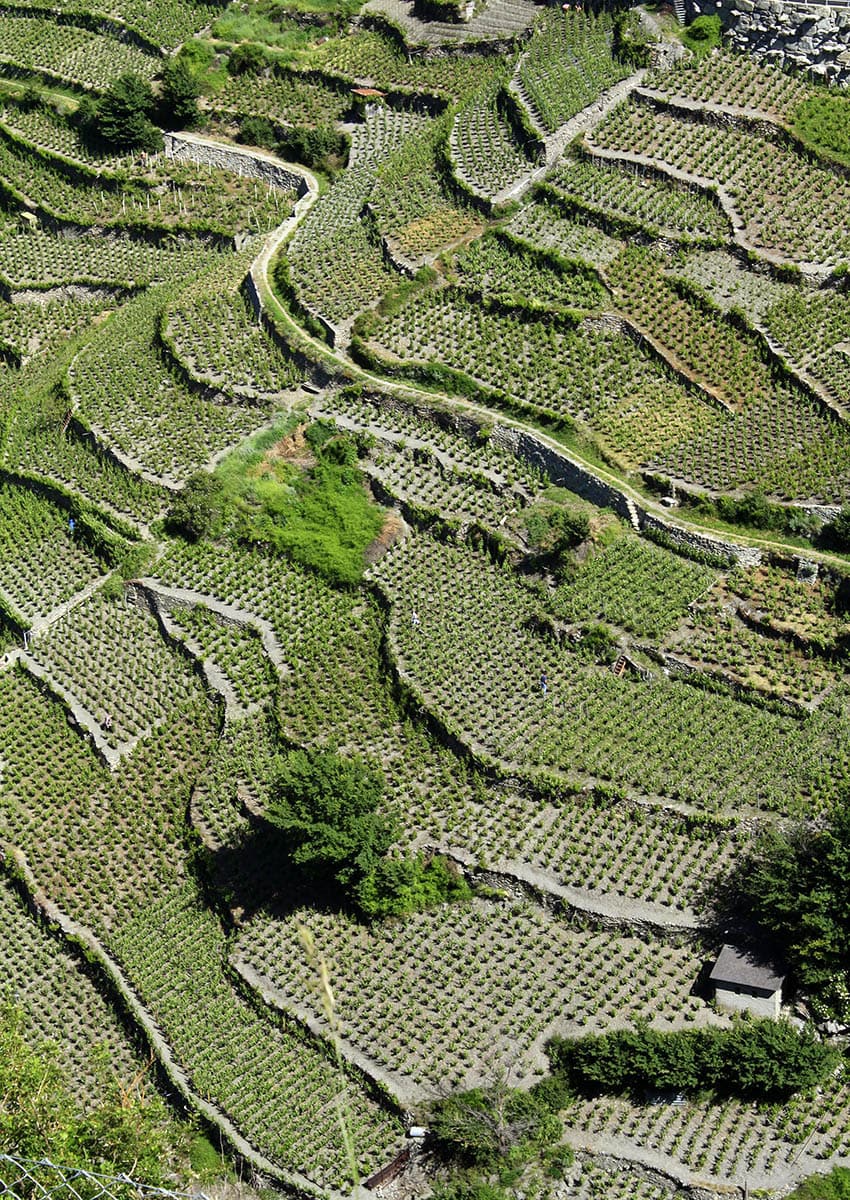
The Layers of the Lavaux

It was a short train ride via Montreux and onto Vevey. Not only is Vevey home to Nestlé, but it is also where Charlie Chaplin, the star of silent movies, resided until his death in 1977. You’ll find Chaplin’s World which is a museum that pays homage to his life, as well as Alimentarium, a food museum.
My home was the graceful Hotel Des Trois Couronnes with Le 3C Restaurant overlooking Lake Geneva. I ate here one night and lunched the next day at The Deck perched high above the vineyards of the Lavaux and the lake. It seemed only appropriate that I should eat the local perch fished from the lake.
Grapes have been produced on the steep terraces of the Lavaux since the 12th century. I headed to the estate of Patrick Fonjallaz in Cully to sip wine from the gardens of the winery high above the lake. I especially enjoyed La République, a white wine made from Sauvignon Blanc and Romand “Roche Rouge”, a light red wine made from Gamay grapes.
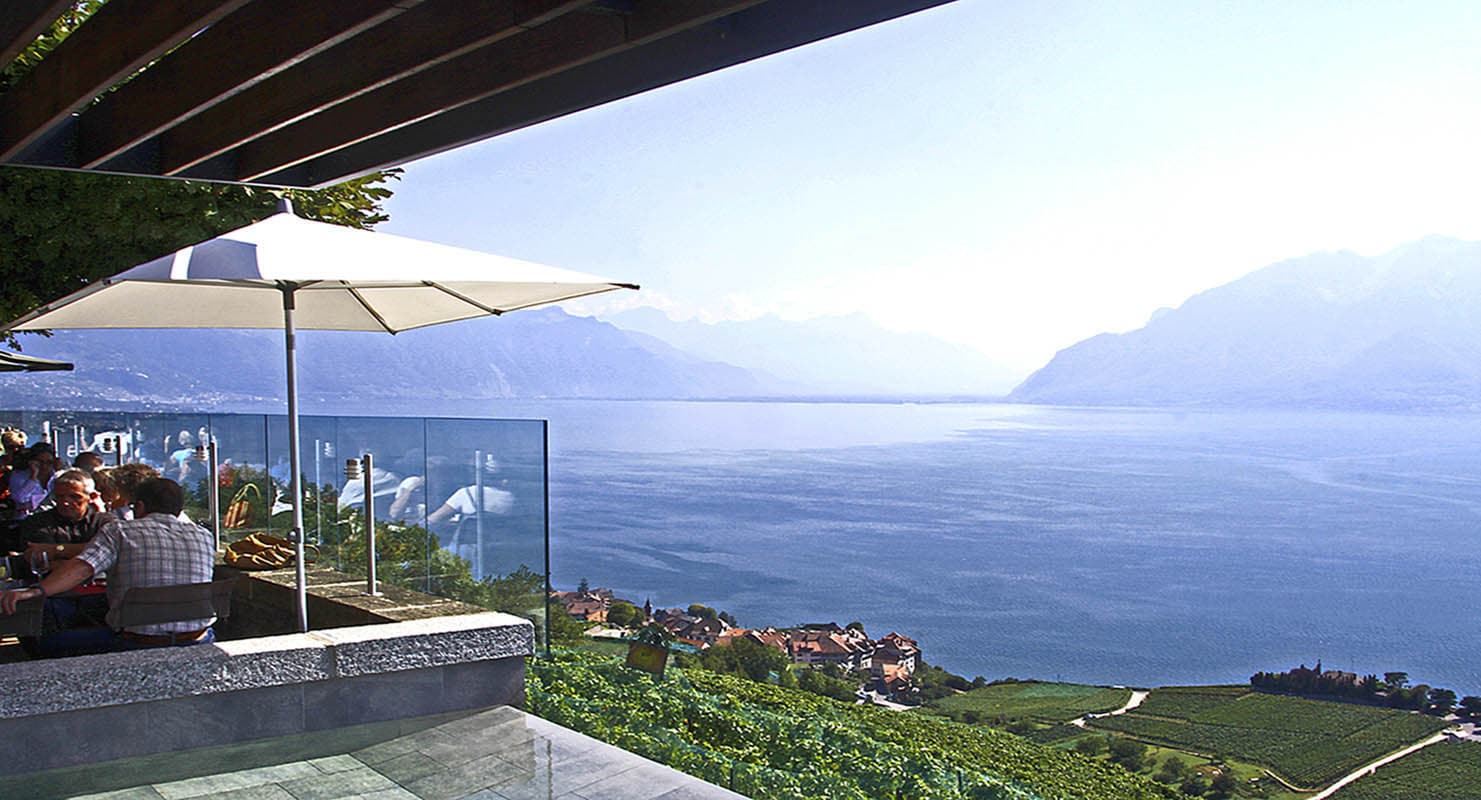
A Rosé like a Partridge’s Eye

My last destination was to the canton of Neuchâtel and the small picturesque lakeside village of Ligerz. Situated on the western slopes of Bielersee Lake, Pinot Noir is used to make a Rosé called Oeil-de-Perdrix or partridge’s eye (named after its salmon pink colour).
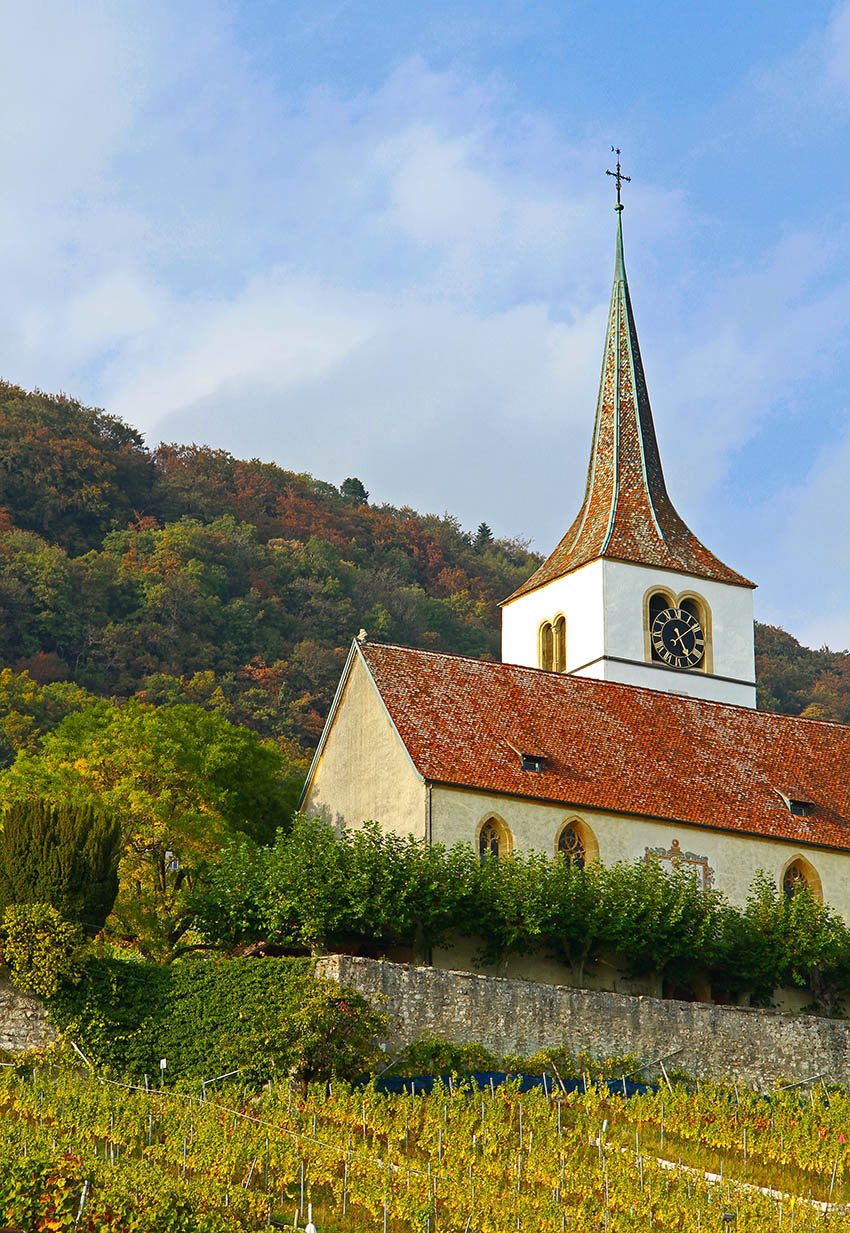
Wine touring in Switzerland means exploring beautiful landscapes, enjoying regional delicacies such as cheeses and local sausage and meats, as well as dining in restaurants serving regional dishes and wines.
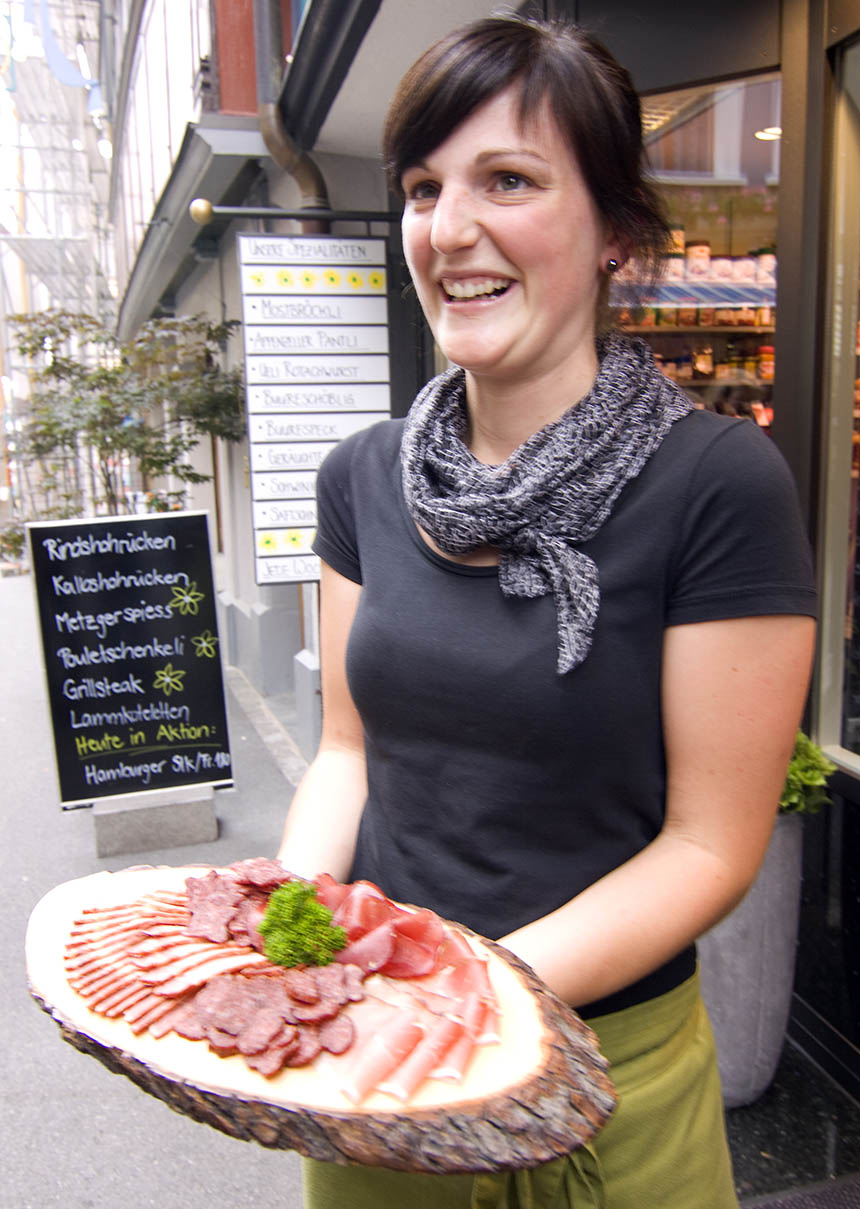
Rail to Vines

Travelling by public transport such as trains is the best way to explore the country. In some places, especially in the mountainous areas, buses and cable cars are used with excellent connections to the train network. You do not have to walk far in between transports and buses are timed to meet trains.
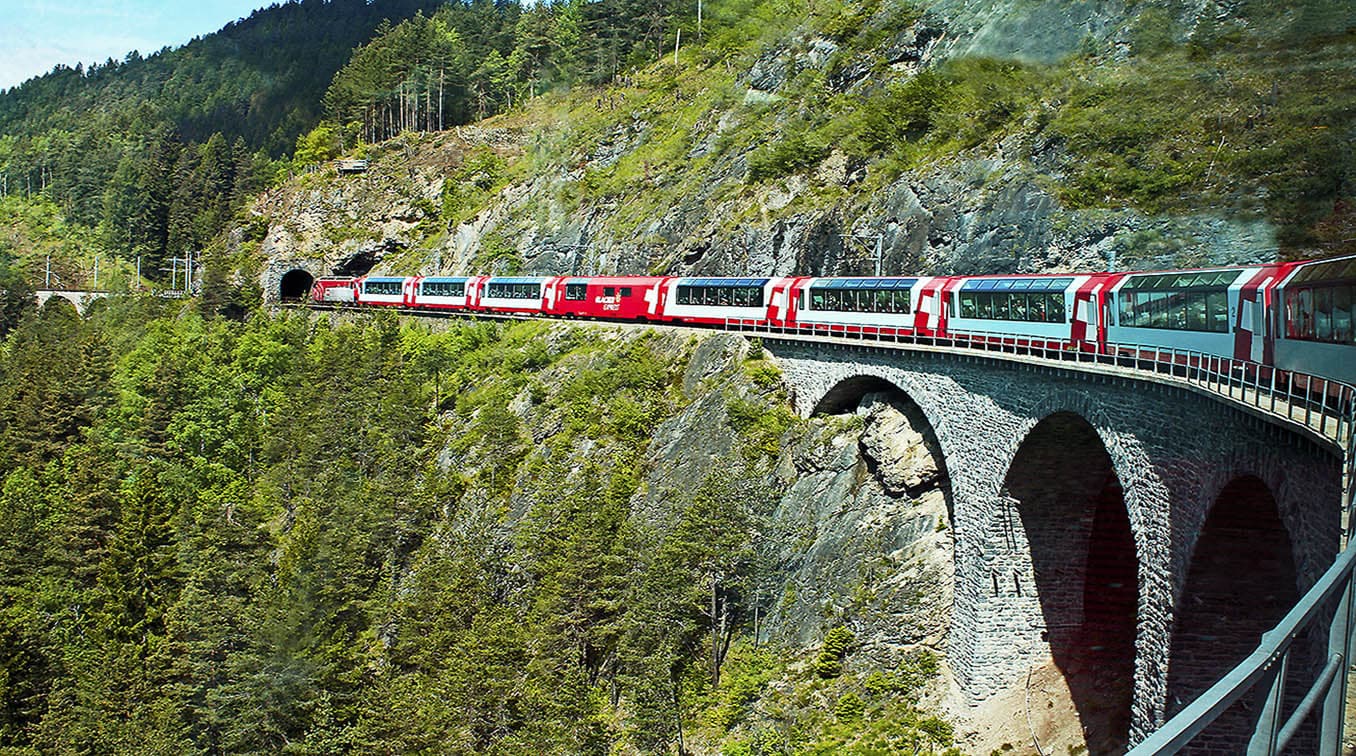
Travel passes of different durations are possible and I used a seven-day pass that I purchased online before travelling. Those who love the finer things in life such as wine and food will love exploring the wineries of Switzerland.
There are many things I like about Switzerland including the flag which I think is a big plus (pun intended). But the country’s wines and the sites where they are produced offered me a new perspective on a country that everyone should visit.
[tabs]
[tab title=”Where to Stay” icon=”entypo-suitcase”]
Where to Stay during your Trip
[button style=’blue’ icon=”entypo-suitcase” url=’https://www.expedia.com.sg/Northern-Switzerland-Hotels.d6050156.Travel-Guide-Hotels’ fullwidth=’true’] Find Hotels in Switzerland [/button]
[/tab]
[tab title=”Let’s Go!” icon=”entypo-flight”]
[button icon=”entypo-flight” url=’https://www.expedia.com.sg/Destinations-In-Switzerland.d174.Flight-Destinations’ fullwidth=’true’] Flights to Switzerland [/button]
[/tab]
[/tabs]